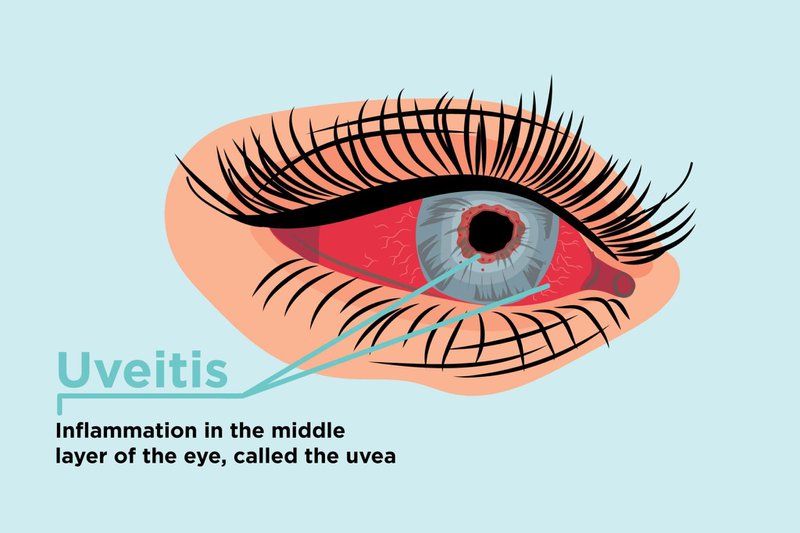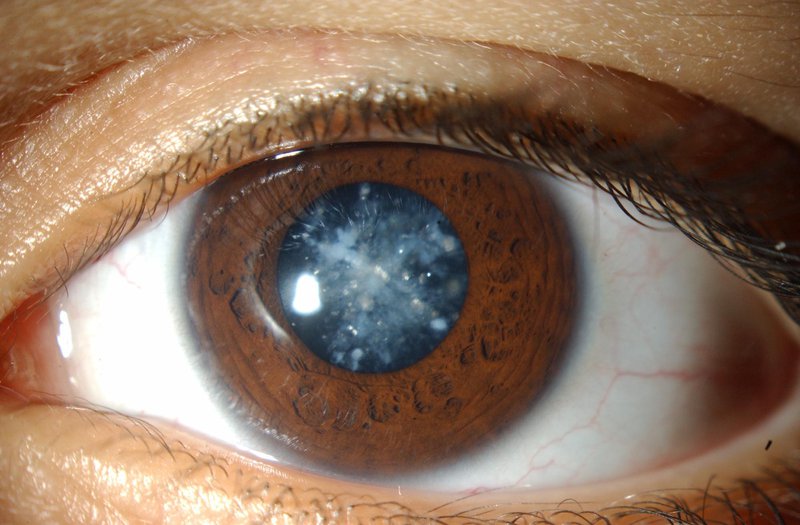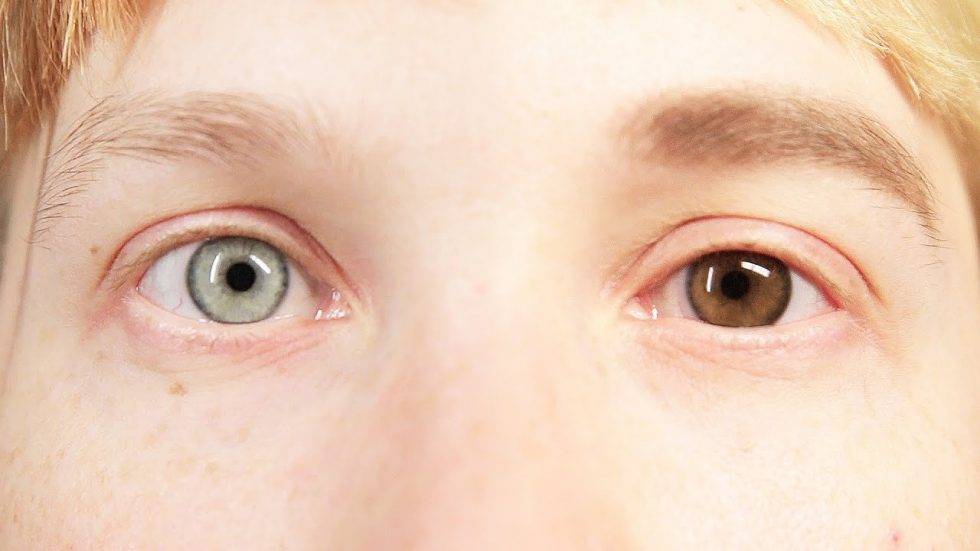Changes in eye colour are rare. Sometimes, the colour of your eye may appear to change when your pupils dilate. The colours in your environment, including lighting and your clothes, can give the illusion of eye colour change.
But if you notice an actual colour change in one or both eyes, see a doctor for a complete eye exam. Eye colour change can be harmless or a sign of a condition that needs treatment.
“The factors that can cause eyes to change colours—or appear to have different colours—include genes, diseases, medications and trauma,” said Zia Ul Mazhry, an ophthalmologist in Lahore Pakistan.
By the time they’re about 9 months old, most babies have the eye colour that will last their lifetime. During the first months of life, an infant’s eyes may look more blue-grey and then get darker as eye pigment develops. But a few things can change eye colour at any age.
Changes in eye colour can be related just to the iris, or changes in other parts of the eye can make the colour of the iris look different.
Iris Color Changes

Iris freckles are small brown spots on the surface of the iris that are often related to sun exposure. They’re common and usually harmless, like freckles on the skin.
Iris nevi are larger freckles or dark growths on the eye that look like a mole. Nevi are caused by pigment cells called melanocytes. They are usually harmless and slow-growing but can be a risk for cancer. Nevi aren’t as common as iris freckles and should be watched by a doctor.
Lisch nodules
Small brown bumps that grow over the iris. These growths are usually associated with a condition called neurofibromatosis. A nervous system disorder that causes small tumors to grow on nerve cells throughout the body, this condition appears to have a genetic link and run in families. The presence of Lisch nodules is helpful in diagnosing neurofibromatosis. They usually don’t affect vision. People with neurofibromatosis can live normal lives, unless there are more serious complications.
Fuchs heterochromic iridocyclitis
An inflammation of some of the structures of the front of the eye, including the iris. The cause of Fuchs heterochromic iridocyclitis isn’t known and it can sometimes be difficult to treat. Symptoms include atrophy of the iris, a loss of pigment in the iris so that the color of the eye changes, cataracts and inflammation in the eye. Fuchs heterochromic iridocyclitis sometimes leads to glaucoma, which can cause vision loss if not treated.

Iridocorneal endothelial (ICE) syndrome
A very rare combination of three conditions that develop together, affecting the iris and cornea. Cells from the cornea break away and move to the iris. This tissue appears like blotches or spots on the iris, affecting eye color. ICE syndrome usually affects only one eye. It leads to glaucoma.
Pigment dispersion syndrome
which is also known as pigment loss. Pigment is lost from the back surface of the iris and those cells float to other parts of the eye. They can clog the eye’s drainage angle, increasing eye pressure. It’s most common in younger males who are near-sighted. It can affect eye color, lightening parts of the iris where pigment falls away. People with the syndrome may not see or feel any symptoms. It can lead to pigmentary glaucoma, which causes blurred vision and other vision changes. The syndrome is often diagnosed when people experience signs of glaucoma. Glaucoma treatment can help.
Uveitis

An inflammation of the middle layer of the eyeball. There are several kinds, depending on what part of the eye is swollen. Uveitis is usually caused by inflammation, infection, trauma or exposure to toxins. It can make the conjunctiva (clear covering over the white of the eye) look red. Patients may notice a change in eye color if the iris sticks to the lens and changes the pupil’s size or shape. Uveitis requires immediate medical attention.
Horner’s syndrome
A rare condition that is usually the result of a stroke, tumor or spinal cord injury damaging facial nerves. It affects one side of the face. Symptoms include drooping eyelids, uneven pupil size and the inability to sweat on that side of the face. When one pupil is much larger than then the other, eye color looks different. In very rare cases, Horner’s Syndrome occurs in newborns or infants. Horner’s syndrome can also cause a change in eye color due to depigmentation of the iris.
Trauma:
Injury or trauma to the eye can damage the iris, causing tissue loss. This tissue loss can make the eye color look different.
A dilated pupil can make the color of that eye look different from the other eye. The eye color isn’t actually changed, but if the pupil is dilated, less of the color of the iris can be seen. A dilated pupil can be a symptom of a serious condition such as a stroke or brain injury. It can also be the result of eye trauma. In some cases, the pupil returns to normal size with treatment. The formal term for a difference in pupil size is anisocoria. The color difference between musician David Bowie’s eyes was from anisocoria.
Eye Color Changes Caused by Medications
Glaucoma medications called prostaglandins can cause permanent eye color changes, usually making eyes a darker shade of their natural color over time. Latisse is a prostaglandin medication used to lengthen eyelashes that doesn’t appear to change iris color.
Eye Color Changes Not Related to the Iris
Arcus senilis is a hazy blue or white ring on the cornea from a build-up of a natural fatty substance called lipids. It’s common with aging and usually harmless. Most seniors have some degree of arcus senilis.
A Keyser Fleischer ring is a greenish/orange ring in the cornea from Wilson’s Disease, a condition related to elevated copper in the body. It’s very rare and needs medical treatment.
Hyphema is when there is blood inside the eye, usually from an injury or after surgery.
A cataract is a clouding of the lens of the eye, behind the pupil, that makes it look milky or grey. Cataracts are common with aging and affect vision. In most cases, they can be successfully removed with surgery.

What To Do If Your Eyes Are Changing Color
Most people will have the same unique eye color from the time they’re learning to walk until they’re seniors. Aging increases the possibility of eye color changes, especially from cataracts and arcus senilis.
If you notice any distinct color change, in either of your eyes, see an ophthalmologist right away. It’s also helpful to get a baseline ophthalmological exam at around age 40, and have follow-up exams when your doctor recommends. Eye color is one of the many things a doctor will look at in assessing general eye health. If there are problems, early treatment can make a big difference.


